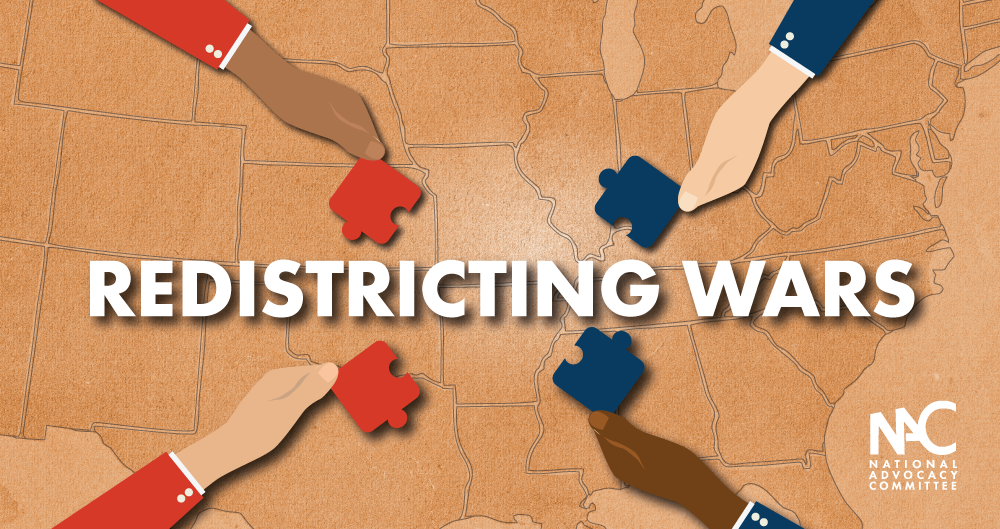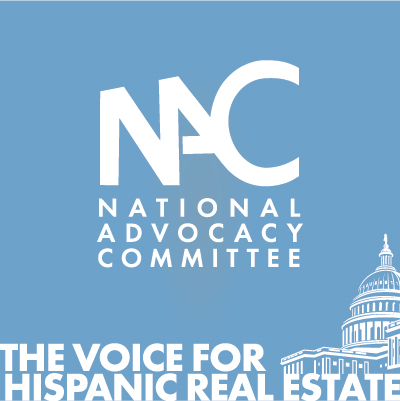The 2020 Census and how Redistricting Battles Shape our Future
Celebrating NAHREP familia, cultura, politics, and grassroots action
October 28, 2021
Qué onda mi gente?!
If you have read the State of Hispanic Homeownership Report, you’ll know that Latinos have been the engine behind population growth in America. Today, Latinos are the second largest racial/ethnic group in the U.S., second only to the non-Hispanic White population.
Why am I bringing this up? Because something very consequential is happening right now that is directly tied to population and political power: the redistricting wars. And all of us should be paying close attention.
Every 10 years, the U.S. spends considerable resources on ensuring that every person residing in the U.S. is counted through the U.S. Census. Results from last year’s decennial Census were released this year. Given the latest Census, major decisions about political representation over the next ten years are being determined as we speak.
What is important to know is that population determines how many congressional districts, state legislature districts, and city council districts there are. The political drama occurs in how districts are drawn. The drawing of the boundaries of a district will determine political power for the next decade because districts are drawn to ensure that districts are either safely Republican or safely Democrat. More about this later.

Highlights from the 2020 Census:
First, let’s go over what the 2020 Census told us about what happened between 2010-2020.
- The U.S. Hispanic population reached 62.1 million in 2020, up from 50.5 million in 2010 with a 23% Hispanic population increase, compared to only 7% for the general population.
- As of 2020, Hispanics make up nearly one in every five people in the U.S. (19% of the U.S. population), up from 16% in 2010 and just 5% in 1970.
- Between 2010 to 2020, Hispanics accounted for 51% of the U.S. population growth, a greater share than any other racial or ethnic group.
- Population increases in the top 3 Latino states accounted for 43% of the nation’s Latino population growth:
- Texas (+2.0 million Latinos)
- California (+1.6 million Latinos)
- Florida (+1.5 million Latinos)
- The Latino population grew faster in the South than in any other U.S. regionsince 2010.
NAC Glossary:
Before we get into why you should care about the redistricting wars happening right now, let’s first define some wonky terms.
Redistricting: This is an official term describing the fact that every 10 years, once the Census is completed, the Federal government requires states to redraw congressional, state legislative, and city council districts with the following requirements:
- Districts have to be equal in population. For example, all congressional districts in a state must have equal amounts of people in each district.
- The number of congressional districts a state gets is determined by population. For example, California gets the most congressional districts because it has the most population. On the other hand, a state like Wyoming only gets one congressional district because barely anyone lives there! However, California is losing a congressional district because its population is growing at a slower rate than other states (Californians fleeing housing prices), whereas Texas will gain 2 extra Congressional seats. A lot of that growth in Texas has been due to Latinos.
Gerrymandering: In two words, una barbaridad! Gerrymandering is the drawing of districts that often results in one party getting an overwhelming advantage over the other. This means districts get drawn in the most ridiculous of ways (some in Texas are little skinny districts that go from the southern-most point of Texas all the way to the middle of the state) so that Republicans are in a district with other Republicans, and Democrats are in a district with other Democrats. Who is in power in the state governor’s mansion and who has power in the state legislature determines who sits on the committees that draw these locura of districts. As you can imagine, things get pretty crazy and “political” in these committees.
Voting Rights Act: The Voting Rights Act also ensures that districts are reflective of the diversity of the country. According to the latest Census, there must be a commensurate number of majority-minority districts. This means that some areas with large Black or Latino populations, must be drawn to ensure that there is minority representation.
Why does this matter to us?
Given the growth of the Latino population, it is critical that as states and localities move forward with redistricting, the districts that are drawn take into account the enormous Latino population growth. Believe it or not, despite Latinos being as large of a group as they are, people ignore us in these redistricting efforts.
Furthermore, the fact that these districts get drawn so they are either safely Republican or safely Democrat, is the reason our country is so polarized today. There’s no incentive for people to move to the middle, because most congressional races are not competitive. Gerrymandering is the most effective tool for a party to determine the election outcomes even before people have voted, just by how the lines are drawn. California, which is the most populous Latino state and where the most Latino members of congress come from, is set to lose a seat, probably in Latino-heavy Los Angeles.
NAHREP is a moderate organization. Polarization hurts our democracy. My ask of you is that you pay close attention to what is happening with the redistricting committees in your state and your city. When you see an article in your local paper about redistricting, read it. Stay informed because the decisions made in these redistricting wars will determine the future landscape of our country.
CALL TO ACTION
Speaking of determining the landscape of our country, we still have a major campaign going on! If you haven’t done so already, we are urging our Senators to make sure housing supply and homeownership remain critical elements of the reconciliation bill. As we outlined last week, housing provisions were taken out of the latest draft. Call and tell your representative that investing in housing today is not only good for our economy, it is the single most stabilizing thing we can do for families in the middle of so much uncertainty.

About Noerena Limón
Noerena Limón is NAHREP’s Executive Vice President of Public Policy and Industry Relations. Noerena heads the organization’s policy and advocacy efforts on issues ranging from homeownership, housing inventory, credit access and immigration.
Prior to joining NAHREP, Noerena spent six years at the Consumer Financial Protection Bureau (CFPB) and served as a political appointee under President Obama in the White House Office of Political Affairs.




